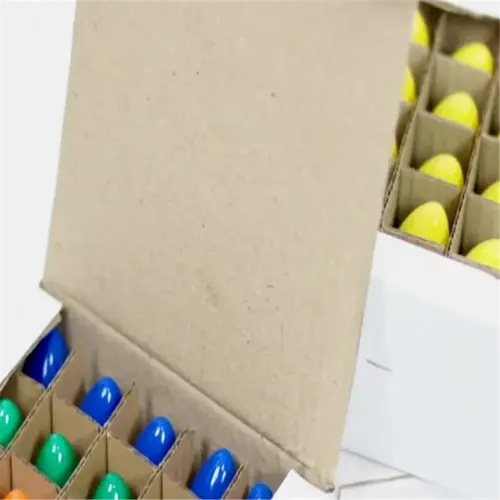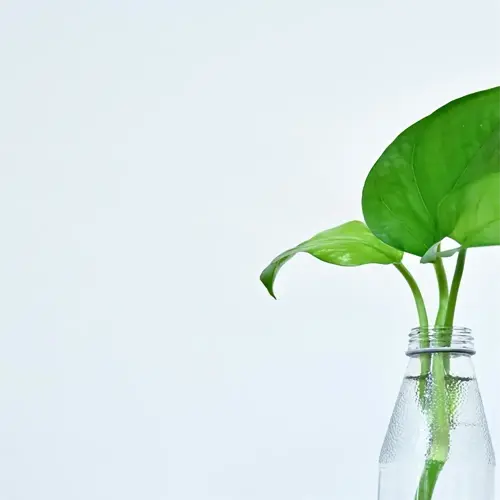How to Test Soil: 7 Essential Steps for Healthy Gardens

Written by
Paul Reynolds
Reviewed by
Prof. Charles Hartman, Ph.D.Learn to test your soil, through depth-specific sampling and laboratory results.
Test for pH to identify acidic/alkaline imbalances and determine specific amendments.
Identify nutrient deficiencies (NPK, calcium) through seasonal soil tests.
Assess soil texture to inform drainage and root exploration strategies.
Test for heavy metals to reduce toxicity in urban gardens.
Use soil test recommendations to guide fertilizers more accurately.
Article Navigation
Understanding how to test soil transformed my gardening experiences. For many years, I struggled with spacing out plant growth. Finally, I discovered that there is more to healthy soil than just dirt; it is a living ecosystem. The testing of soil will show all factors and variables contributing to soil nutrients and pH balance that can not be seen with the eye.
Follow a 7-step process that will remove all uncertainties. Start with a sample of soil; improvise a soil texture classification, measure pH, and measure nutrients. I have saved 100s on fertilizers by knowing soil deficiencies and correcting the lack of targeted products, instead of the old method of blanketing your entire garden with products that will oftentimes do more harm than good.
Sustainable gardening is based on precision. Testing gives you information to avoid over-fertilizing, and protecting water quality in your local waters. Knowing the exact composition of your soils helps you invest in amendments that hold up. My tomatoes now produce twice the yield with less than half the effort.
Step-by-Step Soil Sampling Guide
It is a bigger deal than you realize when it comes to your tools. I once performed a soil sample that got ruined because I used a rusty shovel. The metal chips distorted the results. Make sure you take your sample with a stainless steel trowel. Wooden tools can introduce mold or chemical residues that will alter your nutrient readings.
Collect 10-15 subsamples from distinct zones throughout your garden. The sample close to the compost pile, for example, may show an ideal phosphorus amount, while another sample taken near the shed might show spikes of acidity. Having this range provides statistical reliability to your test results, especially in soils that are amended unequally.
The containers we use also affect accuracy. I discovered the hard way with pH testing when I used metal buckets. I was looking for acidic soils and found them, but my readings showed a neutral reaction to soil acidity, even though the soils smelled like vinegar. For organic matter testing, I always recommend plastic containers to prevent microorganisms from spiking the ammonia levels.
Dig to depths of 3-4 inches (7.6-10 cm) for lawns but you need to dig deeper, 6 inches (15 cm), for vegetable beds. Deeper sampling avoids missing shallow compacted layers where the salts accumulate. I changed my sampling method after discovering there were toxic levels of sodium just below my tomato roots last year.
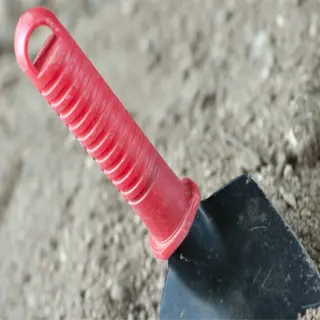
Soil Trowel
- Stainless steel construction prevents rust contamination in nutrient tests
- 4-inch (10 cm) blade ideal for lawns and shallow-rooted flowers
- Angled edge cuts through compacted clay up to 12" (30 cm) deep
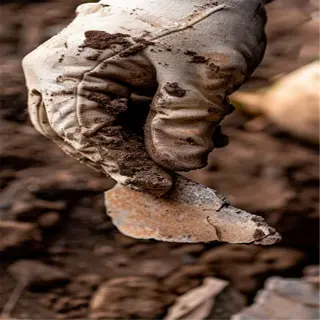
Sampling Gloves
- Nitrile-coated palms improve grip on wet tools during rainy conditions
- Prevents skin oils from altering microbial test results in labs
- Machine-washable pairs maintain hygiene between multiple sampling sessions
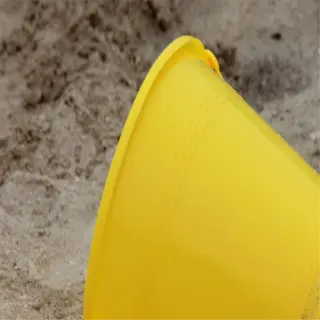
Sample Bucket
- 2-gallon (7.5L) capacity mixes 15 subsamples without spillage
- Non-reactive polyethylene avoids metal ion interference in pH tests
- Transparent walls enable visual inspection for root fragments
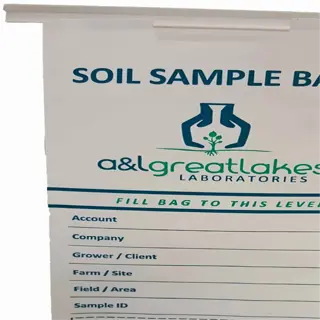
Labeling Tags
- Weatherproof tags withstand high humidity during transport to labs
- Zone-based labeling system tracks crop rotation over multiple years
- Color-coded edges differentiate vegetable beds from lawn areas
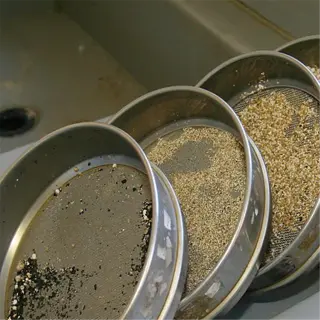
Soil Sieve
- 2mm mesh filters rocks from samples for accurate texture analysis
- Reinforced stainless steel frame ensures long-term durability
- Ergonomic handle reduces hand strain during prolonged sieving
Why Soil Testing Matters
Even experienced gardeners can overlook findings from soil tests that do solve mysteries. Last summer my tomatoes experienced a classic sign of calcium deficiency, blossom-end rot. You can take my word for it, a soil test found that calcium levels were adequate but the pH levels were poor, leaving nutrients locked in the soil's chemistry. I was able to adjust my lime applications and, within just a few weeks, my crop returned to full growth.
Over-fertilization incurs costs beyond financial expenses. My neighbor routinely paid $120 a year for generic plant food until a soil test revealed high phosphorus levels. After switching to plant food for bloom color, she now spends $45 a year. While hydrangeas also indicate soil pH levels, blue blooms indicate acidified soil (5.0 - 5.5), while pink blooms prefer neutral to alkaline soil conditions (6.5+).
Lawns and gardens compete for the "perfect" pH. Grass grows best with an approximate pH of 6.0 while a vegetable garden has a preference for 6.5 - 7.0 to access nutrients. I learned this the hard way, as some of my beans turned yellow, even though I had added sufficient nitrogen to the soil; the pH was 5.8, preventing the beans from accessing iron. All this conflict was resolved after one simple pH test.
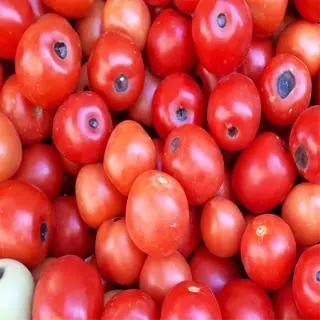
Disease Prevention
- Calcium-deficient soils are a leading cause of blossom-end rot
- Testing allows lime application 6 months before planting
- Ideal range: 200-400 ppm calcium for nightshade plants

Fertilizer Efficiency
- Over-fertilization costs homeowners $100-$200 annually for average lawns
- Balanced NPK ratios reduce runoff by 40-60% in most regions
- Target 1-2% organic matter for slow-release nutrients
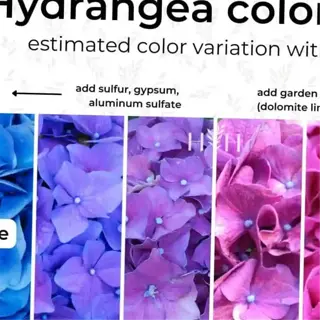
pH-Dependent Blooms
- Acidic soils (pH 5.0-5.5) produce blue hydrangea blooms
- Alkaline soils (pH 6.5+) create pink/purple flowers
- 2.5lb (1.1kg) sulfur per 100ft² lowers pH by 1 unit
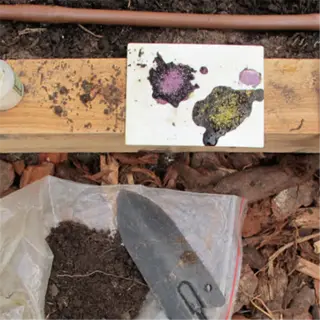
Heavy Metal Detection
- Urban soils often exceed EPA's 400ppm lead safety limits
- Lab tests detect arsenic/cadmium from industrial sites
- Phytoremediation plants reduce toxins over 3-5 years
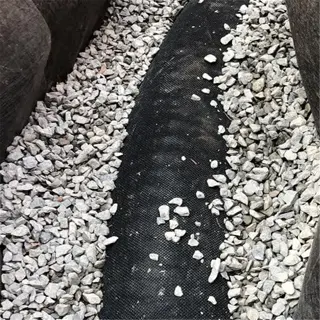
Water Retention
- Sandy soils drain twice as fast as loam-based soils
- 5% compost addition improves moisture retention by 25-30%
- Optimal ratio: 40% sand, 40% silt, 20% clay for vegetable gardens
Understanding Soil pH Basics
Soil pH is measured on a scale from 0 to 14; pure water is neutral at 7; battery acid is 0 and drain cleaner is 14. Most gardens will grow well between 5.5 to 7.0. I tested my soil for pH with vinegar, which is acidic, and baking soda, which is alkaline. The reaction sizzled and bubbled, suggesting I was at either extreme, but when I sent my soil in for lab testing, it was at 6.2. Simple tests can indicate pH, but would not be accurate enough for management of nutrients.
When it comes to rainy areas, lime in pelletized form is superior to powdered versions. After I lost a squash crop to acidic soil, I tried to apply powdered lime and watch it wash away. Pellets bind better so that lime in that form releases calcium over months. Powdered lime works for a quick fix before planting, but you will have to reapply it often.
Crops that are sensitive to soil pH are worthy of consideration. Potatoes scab at a pH higher than 5.2 while blueberries will yellow at a pH lower than 4.5. My neighbor had pink hydrangeas that would stay pink until I helped him lower his soil pH to 5.8 with sulfur. Test your soil yearly if you are growing either of these crops because pH can drift with rain, fertilizers, and organic matter breaking down.
Blueberries
- Ideal range: 4.5-5.5 pH (University of Maine Extension)
- Yellow leaves indicate pH >5.5
- Amend with 1lb (0.45kg) sulfur per 100ft² annually
Tomatoes
- Optimal range: 6.0-6.8 pH (Cornell University)
- Blossom-end rot risk increases below 5.8
- Add 5lb (2.3kg) lime per 100ft² if acidic
Hydrangeas
- Blue blooms: 5.0-5.5 pH (add aluminum sulfate)
- Pink blooms: 6.5-7.0 pH (add lime)
- Color change requires 12-24 months (Penn State Extension)
Lawns
- Cool-season grasses: 6.3-6.8 pH
- Warm-season grasses: 5.8-6.4 pH
- Apply 50lb (23kg) lime per 1000ft² to raise pH by 0.5
Asparagus
- Tolerates 6.5-8.0 pH range
- Thrives in alkaline soils
- Avoid amendments - prefers native high pH
Interpreting Soil Test Results
NPK ratios indicate what your soil or plant is lacking. My roses were very unhappy, but testing showed I had an NPK ratio of 10-5-5, where nitrogen was too high and phosphorus was too low for blooms. Leafy greens do well on higher nitrogen (3-1-2) while root crops require a good balance of NPK. Find the right numbers for your plant needs.
Keep in mind the micronutrients, such as iron and zinc. For example, in my beans last year, I had yellow veins, which is a classic iron deficiency. The lab tests determined that the iron wasn't low, but rather it was being locked out due to pH. Also, don't forget about copper; a customer of mine had stunted tomatoes, and all it took was 0.2 ppm of copper for them to recover.
CEC (Cation Exchange Capacity) quantifies the soil's potential to retain nutrients. For example, sandy soil with a CEC of 5 loses fertilizer quickly, while my clay garden has a CEC of 22, which means I shovel less. High CEC? Just use slow-release amendments. Low CEC? Apply small doses frequently to not waste.
Soluble salts greater than 1.5 mmhos/cm can be damaging to your seedlings. I know firsthand, that I used to have a full batch of lettuce fry to high salts from over-fertilizing. For seedlings, you are looking to be under a reading of 0.8. If your test is above a safe threshold, you can reach them out with 6 inches of water.
Cation Exchange Capacity (CEC)
- Sandy soils: 5-10 meq/100g (needs frequent amending)
- Clay soils: 15-30 meq/100g (holds nutrients longer)
- Ideal vegetable garden: 10-15 meq/100g
Base Saturation
- Calcium: 65-75% of CEC
- Magnesium: 10-15%
- Potassium: 3-5%
Organic Matter %
- Lawns: 2-3% (promotes dense growth)
- Gardens: 5-8% (improves water retention)
- Add 1 ton (900kg) compost per 1000ft² to increase by 1% annually
Soluble Salts
- Safe for seeds: <1.0 mmhos/cm
- Mature plants: <3.0 mmhos/cm
- Leach soil if >5.0 mmhos/cm
Zinc & Copper
- Zinc: 2-10 ppm (critical for enzyme production)
- Copper: 0.5-2 ppm (excess causes toxicity)
- Chelated supplements for deficiencies
Adjusting Nutrients for Optimal Growth
Organic amendments can take months to break down and release nutrients for soil life, such as compost. My one client with three acres of corn saw it green up in three days once I put a 10-10-10 granular synthetic fertilizer down. Not only was there an early green-up, but there was also a risk of salt buildup with too much usage. I recommend organic amendments in the fall to time for the next spring growth, and synthetic fertilizer before the growth spurts in spring.
In spring, the nitrogen needs of leafy greens peak, and the ideal time to apply blood meal or urea is about six weeks before planting. Phosphorus loves cool fall soils, so I apply rock phosphate to my planting beds before winter rains. If you miss these windows, you'll be chasing deficiencies all season long.
Determine N-P-K ratios for each growth stage of the crop. My tomatoes receive 5-10-10 when they are flowering and then switch to 3-15-15 once they begin to fruit. My lettuce gets 8-4-4 throughout its life cycle from germination to harvest. A client had stunted seedlings of peppers, so we increased its potassium to 12% using banana peel tea, not chemical fertilizers from Home Depot or Lowe's.
Micronutrients are quick to become toxic. A few summers ago, a client began observing burnt edges on beans. Soil tests indicated there was 25ppm copper due to excessive use of fungicides. We flushed the soil using gypsum and transitioned from soil-applied fungicides to using foliar-applied sprays of zinc. As a general rule, test soil every two years if you are using chelated soil nutrient supplements to avoid it building up in silence.
Slow-Release Organics
- Compost: 1-2-1 NPK, improves soil structure
- Bone meal: 4-12-0 NPK, takes 4 months to break down
- Apply fall before spring planting
Fast-Acting Synthetics
- Ammonium nitrate: 34-0-0 NPK, works in 1 week
- Superphosphate: 0-20-0 NPK, available immediately
- Risk of salt buildup with overuse
Micronutrient Solutions
- Chelated iron: corrects chlorosis in 14 days
- Borax: 11% boron, apply 0.5oz/100ft² (14g/9m²)
- Test soil before applying to avoid toxicity
pH Adjusters
- Pelletized lime: raises pH 0.5 units in 6 months
- Elemental sulfur: lowers pH 1 unit per 2lb/100ft² (0.9kg/9m²)
- Apply 3 months before planting
Cover Crop Benefits
- Clover adds 100-150lb nitrogen/acre (112-168kg/ha) via fixation
- Buckwheat mines phosphorus from subsoil
- Mow at flowering for maximum nutrient release
5 Common Myths
Sod tested with the plants appearing healthy means the soil is not tested
Just because the plants have lush foliage doesn't mean that there are not issues lurking beneath the surface such as micronutrient imbalance or possible lead contamination. Soil tests reveal excess zinc (that the plants keep temporarily) and unavailable phosphorus (fixed by pH).
The testing accuracy of any DIY soil test kit is on par with labs
Home test kits will measure pH/N-P-K in the approximate range but miss the other important metrics like CEC (cation exchange capacity) and soluble salts. A lab uses precision lab equipment to measure parts-per-million zinc/copper deficiencies home test strips cannot detect.
If more fertilizer is good, then more fertilizer is better!
Too much nitrogen will burn roots and limit calcium uptake. Soil with a pH <5.5 will lock up 90% of phosphorus. Over-fertilized soils will create salt crusts that will minimize water infiltration by 40-60% percent in clay soils.
Soil tests aren't needed for organic amendments
If compost is over-applied, keep in mind it includes excess potassium (up to 5% KO), which block magnesium consumption. Some soils receiving manure frequently will be at toxic levels of copper (>20ppm) for sensitive crops like beans. Monitoring also allows you to avoid snowballing your nutrient imbalances.
Soil texture cannot be modified or improved.
The most important thing you can do is to add an annual application of compost. Adding 3-4 inches (7-10cm) of compost every year, will increase drainage and water retention in both clay and sandy soils. Gypsum can cause sodium-heavy clays to flocculate within 2 growing seasons, providing stable aggregates for rooting.
Conclusion
Test your soil every year if you're growing heavy feed crops like corn or tomatoes and depleting nutrients rapidly from your soils. On established perennials or lawns, every two years is acceptable. I neglected to test my raspberry patch for three years and it took a toll on the production (I received horrible yields) until I got the pH back in line.
Local extension services are better at interpreting complicated reports than any app. Last spring, with the help of Oregon State, I stumbled across manganese toxicity that my DIY app could not detect. This was relevant information and relevant to my climate. Extension services provide advice based on what works with regional rainfall and soil types. These will not be found in generic guides. Bookmark your state's agricultural website now!
Resilience in the changing climate has a foundation that starts underground. Healthy soils can buffer plants against droughts and floods. For example, after we rebuilt the organic matter in the soil of our garden to 6%, it was able to get through a record heatwave without any irrigation. I keep records of my amendments in a digital journal, and I create Excel spreadsheets to associate compost applications with pH stability in the soil over five growing seasons.
The story of your soil continues to change and evolve. Make note of every lime application, each cover crop rotation, and each test result (soil, leaf, and/or tissue). My client followed her kale's boron deficiency back to too much wood ash through two years of data logs. Consistent tracking in the landscape goes from guessing to inferring and ultimately, a strategy that your garden will appreciate.
External Sources
Frequently Asked Questions
What's the most reliable soil testing method for gardens?
The most reliable method combines professional lab analysis with on-site texture and drainage tests. Labs measure exact nutrient levels (NPK), pH, and contaminants, while field observations assess practical growing conditions like compaction and water retention.
Can DIY soil tests replace laboratory analysis?
DIY kits work for basic pH and NPK estimates but lack precision for critical metrics:
- Miss heavy metals like lead/arsenic
- Can't measure cation exchange capacity (CEC)
- Inaccurate for micronutrients (zinc, boron)
How often should I test my garden soil?
Test every 2-3 years for established gardens, or annually if:
- Growing heavy feeders (tomatoes, corn)
- Experiencing plant diseases/stunted growth
- Applying frequent fertilizers/amendments
What soil problems can a test detect?
Comprehensive tests identify:
- Nutrient deficiencies (nitrogen, calcium)
- Toxic metal contamination
- pH imbalances affecting nutrient uptake
- Excessive salt levels
- Organic matter percentage
Does soil color indicate quality?
Dark soil often suggests high organic matter, but color alone is misleading. Red soils may contain iron oxides, while gray hues signal poor drainage. Always verify with texture and lab testing for accurate assessments.
When should I add lime to my soil?
Apply lime only if tests confirm pH below 6.0 for vegetables or 5.5 for acid-loving plants. Over-liming causes micronutrient lockouts. Pelletized limestone works faster than powdered versions for quick corrections.
Are earthworms a guaranteed sign of healthy soil?
While worms improve soil structure, their presence doesn't confirm ideal conditions. Some contaminated soils still host worms. Test for chemical balances and organic matter to validate soil health beyond worm activity.
How do I collect a proper soil sample?
Follow this protocol:
- Use clean stainless steel tools
- Take 6-8 samples from different zones
- Mix samples in plastic bucket
- Air-dry before lab submission
- Avoid recent fertilizer/compost areas
Can soil tests prevent plant diseases?
Yes - balanced calcium prevents blossom-end rot in tomatoes, while proper pH reduces fungal growth. Tests guide amendments that strengthen plant immunity through optimal nutrient ratios and microbial activity.
What's the first step after getting soil test results?
Prioritize correcting pH imbalances before addressing nutrients. Acidic soils need lime, alkaline soils require sulfur. Adjusting pH unlocks existing nutrients, making subsequent fertilizer applications more effective and economical.
